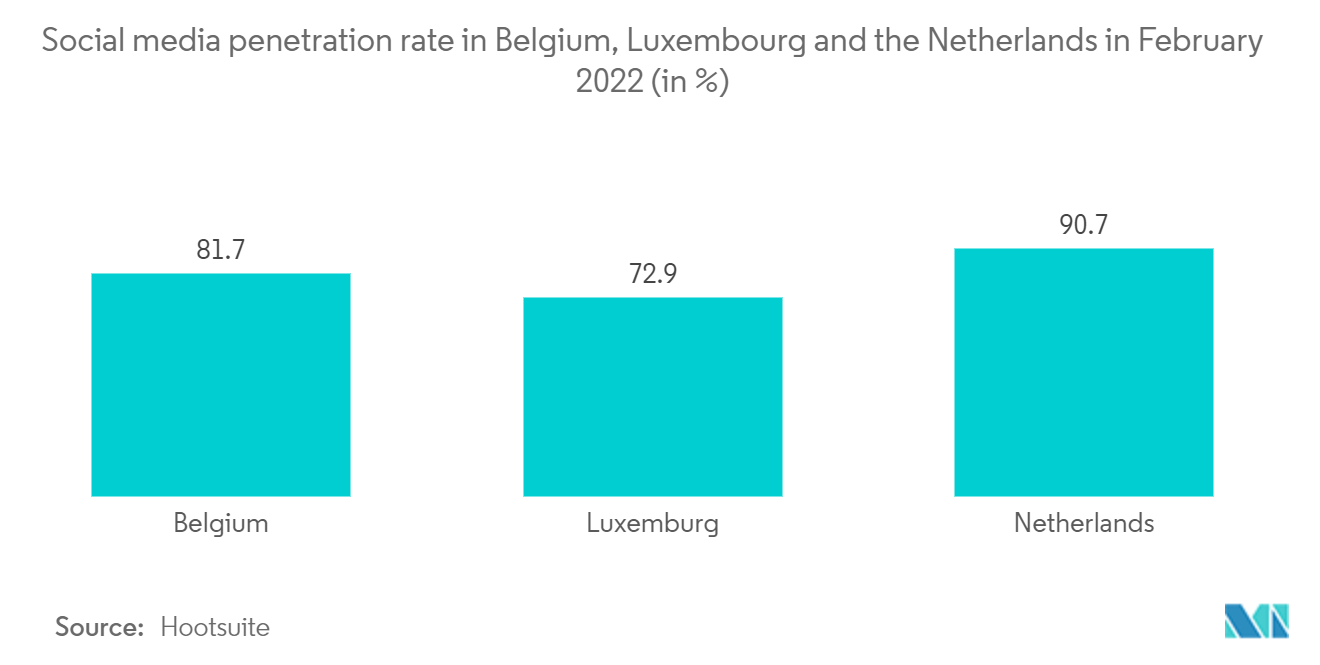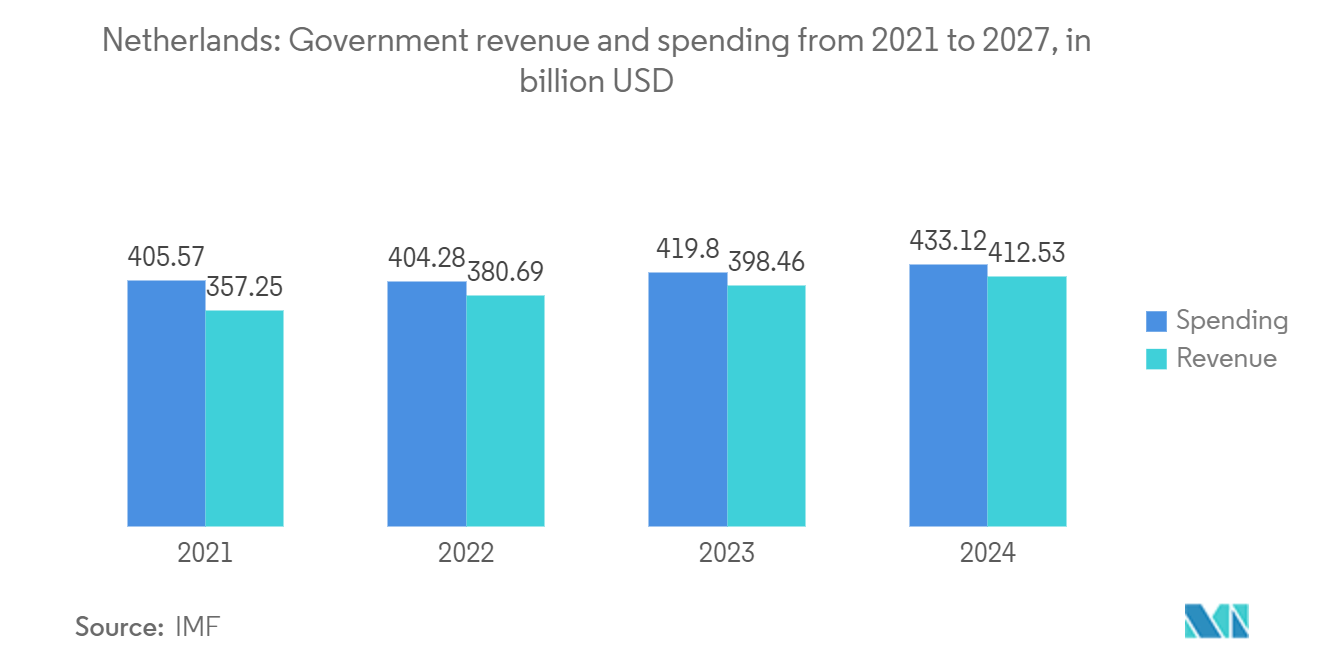Market Trends of Benelux Cybersecurity Industry
IT and Telecommunication segment is poised to grow at a faster pace.
- EEAS (European External Action Service), the EU's external action service, unveiled several new cybersecurity strategies. Most of them aim to make Europe more resilient to cyberattacks while guaranteeing that all individuals and businesses can fully benefit from reliable services and advanced digital technologies. On March 22, 2021, the European Council approved the cybersecurity strategy conclusions, highlighting the significance of cybersecurity in building a resilient, eco-friendly, and digital Europe.
- Critical industries like transportation, energy, healthcare, and finance have increasingly relied on digital technologies to conduct daily operations. While the COVID-19 situation exposed the economy and society to cyber threats, it also opened up vast potential and offered solutions to many of Europe's current problems. The increased expenditure on prevention is due to the massive increase in the risk of cyber assaults on businesses. Compared to 2020, companies in Belgium, France, Germany, Ireland, the Netherlands, Spain, and the United Kingdom boosted their investments in cybersecurity last year.
- According to Hootsuite, there were approximately 16.5 million internet users in the Netherlands as of January 2022, compared to 613,000 people in Luxembourg. This amount seems to be relatively minimal at first. However, in terms of the entire population, Luxembourg had the highest rate of internet use in the Benelux area. By 2022, Belgium had approximately 11 million internet users, accounting for 94% of the country's entire population, compared to 99% of internet users in Luxembourg.
- Furthermore, according to We Are Social, a global agency, as of February 2022, Luxembourg had the highest internet penetration rate in the Benelux region, with 99% of the population online. Belgium had the lowest internet penetration rate, at about 94%.
- In addition, according to Hootsuite, the Netherlands had the highest penetration rate of active social media users on desktops and mobile devices as of 2022, with a figure of 90.7%. Luxembourg had the lowest penetration rate, with just over 72% of the population being active social media users. Hence, with the rise in active social media and internet users in Benelux, the overall demand for cybersecurity will increase considerably in the region, thereby driving market growth exponentially. Such developments would trigger the demand for cybersecurity solutions and services in the IT and Telecom Sector.

The Netherlands is Expected to Witness Significant Growth
- The Netherlands, one of the most wired nations in the world, is considered the digital gateway to Europe. Moreover, due to its robust research, startup, and practitioner ecosystems, the Netherlands is recognized as a leader in Europe in the field of cyber security. Additionally, the country has seen a sharp rise in the number of managed service providers based on public cloud alliances in recent years, resulting in rapid growth for the cloud and cybersecurity sectors. Moreover, the government actively encourages the domestic cybersecurity industry because data security is a top priority. The regional end-user sectors' increasing usage of cloud and digital services is broadening the B2B cloud computing service industry's reach, which has positive implications for the cybersecurity market.
- The Amsterdam Internet Exchange (AMS-IX) is one of the biggest internet exchanges in the world, where various major tech firms have decided to domicile their European operations. Also, over the past 10 years, the Hague region in the Netherlands has established itself as a cybersecurity hotspot. The Dutch government has established the Global Forum for Cyber Expertise in The Hague, where the NATO Communications and Information (NCI) Agency and Europol's European Cyber Crime Center (EC3) are already located. Additionally, it is the location of The Hague Security Delta, the most significant security cluster in Europe, where firms involved in (cyber) security, governmental organizations, and academic institutions collaborate. Hence, with a substantial startup ecosystem, the Netherlands is emerging as a European leader in FinTech, AgTech, and technology-based transportation solutions.
- Four significant problems with cybersecurity in the Netherlands were outlined in the NCSC's 2022 "Cyber Security Assessment Netherlands" report: Unauthorized access to information through espionage, process inaccessibility due to sabotage and the use of ransomware or preparations for this, breaches of cyberspace, such as through the abuse of international IT supply chains, and large-scale outages. Thus, with the rise in these significant issues related to cybersecurity in the Netherlands, the demand for cybersecurity in the region will rise exponentially, thereby driving the market growth.
- According to a 2019 survey by the insurance company Hiscox, Dutch businesses invest an average of USD 1.9 million yearly in cybersecurity. In 2022, this number is anticipated to rise. The Dutch government's spending on cybersecurity in the coming years is also expected to rise. As per IMF, government revenue and spending in the Netherlands were around EUR 328.6 billion and USD 363.99 billion, respectively, in 2020, which is predicted to rise to approximately USD 468.36 billion by 2027. Hence, with the rise in government spending on cybersecurity, the market is expected to experience significant growth opportunities throughout the forecast period.
- According to the annual DHL Global Connectedness Index, the nation has consistently ranked first. Over 6% of the Dutch GDP is estimated to be accounted for by the internet economy, which is expected to expand over the next few years. In addition, according to We Are Social, a global agency, there were 16.5 million internet users in the Netherlands as of January 2022, or 96% of the country's entire population, and there were 15.6 million active social media users in the nation. Thus, with the rise in internet and social media users, the overall demand for cybersecurity will also increase considerably.


